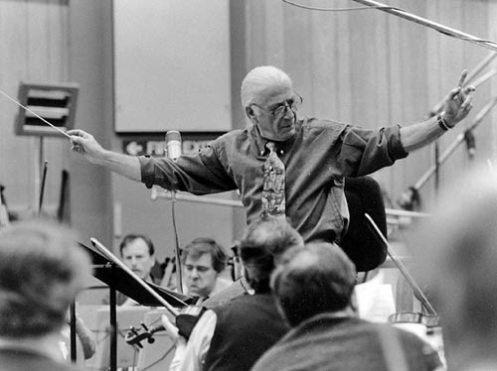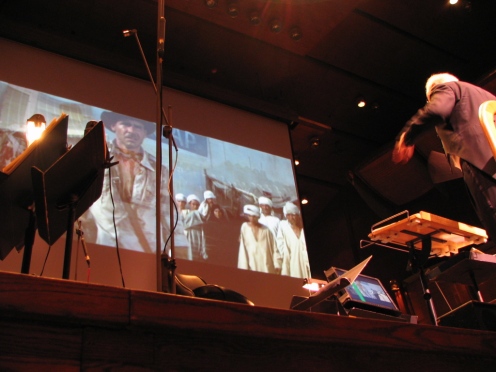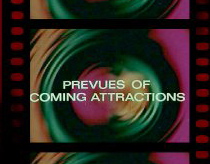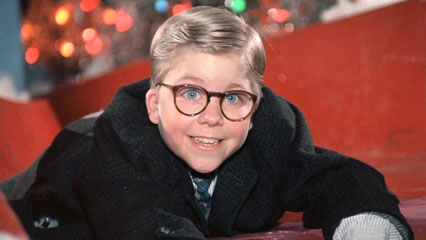
The reviews for the remake of The Last House on the Left have not been too kind. Dennis Harvey of Variety says the film is “Unnecessary on every level save the paramount commercial one.” Peter Howell of the Toronto Star says, “If you’re a sociologist tracking the decline of civilization over the past four decades, you’re in for a night of solid research.” Roger Ebert advises, “I’m giving it a 2.5 in the silly star rating system and throwing up my hands.”
Quite predictably, the film has been roundly tagged as one more experiment in horror torture cinema, which reached a sort of hysterical apotheosis with the Hostel series and a few other less successful variants including Wolf Creek, Captivity, and The Devil’s Rejects (a film that I actually admire). In a 2006 article for New York, David Edelstein lamented the pervasiveness of sadistic horror as Hollywood’s choice scare opiate:
Explicit scenes of torture and mutilation were once confined to the old 42nd Street, the Deuce, in gutbucket Italian cannibal pictures like Make Them Die Slowly, whereas now they have terrific production values and a place of honor in your local multiplex. As a horror maven who long ago made peace, for better and worse, with the genre’s inherent sadism, I’m baffled by how far this new stuff goes—and by why America seems so nuts these days about torture.
It isn’t that surprising, especially if we consider the critical reception of Wes Craven’s original Last House on the Left, which itself was a loose remake of Ingmar Bergman’s The Virgin Spring. Howard Thompson’s New York Times review, even after 30 years, is an apt summary of a sub-genre that still confounds critics and some audiences:
In a thing (as opposed to a film) titled “Last House on the Left,” four slobbering fiends capture and torture two “groovy” young girls who airily explore the bad section of a town and more or less ask for trouble.
When I walked out, after 50 minutes (with 35 to go), one girl had just been dismembered with a machete. They had started in on the other with a slow switchblade. The party who wrote this sickening tripe and also directed the inept actors is Wes Craven. It’s at the Penthouse Theater, for anyone interested in paying to see repulsive people and human agony.
While Thompson’s repulsion stems from the gruesomeness of the film’s depiction of rape, torture and murder, Edelstein is more concerned with the slick, high-end production values afforded to this sub-genre of modern horror. In the days of Craven’s original film, exploitation pics — even highly crafted ones — hardly resembled A, B, and even C-grade fare. Now, the slightly unattractive textures of film grain, overexposures, lens flares, and slap-dash editing are markers of a highly stylized studio horror film. With Rob Zombie’s The Devil’s Rejects and the the remakes of Friday the 13th, The Texas Chain Saw Massacre and The Last House on the Left, the unintentional effects of a low budget and youthful experimentation have been consciously codified into a new system of horror aesthetics. Dennis Cozzalio pinpointed this trend in a recent piece on the new Friday the 13th: “The wonder is that even though every single scare is of the dog/funny stoner/masked psycho-jumping-out-at-you-from-nowhere (accompanied by amplified musical sting, or scream, or stabbing sound effect) variety, the movie is so much more accomplished on a simple technical level than any of its predecessors that, despite its slavish faithfulness to the tired (not a typo) and true Jason formula it ends up, through the sheer magic of competent pacing and high-quality cinematography, seeming like a masterpiece, if not of the horror genre, then at least of the Jason genre.”

Indeed, the cultivation of specific techniques into a new conventional system of aesthetics and high style is not limited to the horror genre. In fact, many modern filmmakers seem to be borrowing and reinventing old techniques all the time, consciously or unconsciously. The most pervasive of the bunch is the use of documentary “realism” in action films and dramas. So, while your old home movies were often poorly lit, hand-held, and edited with lots of jump cuts and subjective inserts, some Hollywood genres have utilized these techniques in the service of greater realism.
There is also the sense that a foul movie like The Texas Chain Saw Massacre and its remake should not look too slick or too artful, since its off-the-cuff approach actually adds another level of mystery, terror, and disgust. The original narration at the beginning of Tobe Hooper’s film points to the film being a factual account “of the tragedy that befell a group of five youths…” Twenty-five years later, The Blair Witch Project went further by claiming that the low-quality video to be actual found footage. Some even claim that the dingy aesthetic of old VHS rental copies add to the mystique and danger of some older horror flicks. What better than to experience true no-budget horrors on a worn VHS copy that warps, stutters, and bleeds color?
So, as these films have moved from trench-coat theaters to suburban multiplexes, their visual styles have also streamlined. But the focus on their unmistakable visual polish has unfairly eclipsed the role of sound in this new horror paradigm, where cheap is now expensive chic. Modern sound style is at the core of my doctoral research and the horror genre provides a useful introduction to some of its key aesthetic trends. To be sure, the sound of modern horror might not deviate from the fundamentals of earlier eras, but as with many things the devil is in the details.
The sound of horror is the exclamation point to a terrifying scene. It’s the rhythmic pulse that quickens our breath in anticipation of a pay-off scare. It can also be laughably predictable: the screech of high strings, a woman’s scream in the dead of night, an intense clap of thunder, the heavy breathing of a nearby assailant. These sonic conventions and icons, among many others, have defined the sound of horror cinema since the 1930s, if not earlier. They contribute to our sense of the genre by providing some key sonic markers.
I’ve always considered the goal of horror sound to be the enhancement of the visual frame by supplying the right amount of atmosphere, tension and directional cues. Sound can also push the limits of horror violence by suggesting far more than what is shown. Points are often raised about the severity of current horror violence, but they usually concern visual depictions of various extreme acts. Arguably, the gurgling, bloody gasps of victims or offscreen sounds of powertools diving into flesh have been safe from MPAA censorship, since it’s heard and not seen. Even as the borders of acceptable graphic imagery enlarge, sound will inevitably push them even wider. The unseen presence of sound taunts us with orchestral crashes, faraway whispers, and deafening silence.
With only mono sound and some stock library tracks, classical Hollywood films have yielded a surfeit of terrifying moments derived from the spare or dense use of sound. In keeping with today’s film roster, the final act of Hooper’s Texas Chain Saw Massacre emphasizes poor Sally’s torment at the hand of her captors. She screams, sobs, and cries throughout the final sequence at full volume. Even as Hooper cuts to wide shots, we still hear her at full volume, in full auditory close-up.
Like Hitchcock did in Blackmail, Hooper substitutes some of Sally’s screams with non-diegetic sound effects and score to — perhaps — give the audience some reprieve from the horror, and to further emphasize the nightmarish qualities of the insane dinner party sequence. The sustained, overt screams play as counterpoint to the film’s opening credits, which depict the police investigation of the chain saw crimes. Over a black screen, the repeated sound of an eerie camera flashbulb give way to fleeting glimpses of human flesh and decaying bodies. The remainder of titles mix sound effects with score, a tapestry of radio static, cymbal hits, and other odd noises. Overall, the dense sound track to Hooper’s film is creatively sewn together, mixing “naturalistic” ambiences with subjective inserts like the sound effect in place of Sally’s scream.
By comparison, the sound of modern horror is quite different, even as it still works to achieve the same results: to provide discomfort. Gregg Rudloff, a sound supervisor, notes:
Where in other films you might want to have nice, smooth transitions between scenes, in a horror film we might do the opposite: We might make an uneven transition so that it startles the audience a little bit — not spill-the-popcorn startling, but just something that’s a little off and uneven about it. It can be something as subtle as a background sound.
And it seems that some critics are paying attention, too. In two reviews for the new Last House on the Left an argument is made that questions the manipulative qualities of sound to inject some faux chills and shocks into what is considered to be a rather predictable flick.
Variety reports that some “hyperbolic camerawork and body-blow Dolby thuds can’t equal the queasy, plain impact of original’s most upsetting moments.” The New York Times adds, “I suspect the movie’s sound designers deserve some kind of an award: thanks to them, the damage one can inflict with small appliances and a giant grudge is all too clear.”
Two things are evident from these observations: 1) impact and 2) clarity. These are two of the most salient characteristics of modern sound technology and style. Digital audio affords greater frequency range, a more robust dynamic range, and crystal clarity at the top and bottom ends of the loudness spectrum — making those appliances sound so piercing.
Low frequency sound from theater subwoofers can reach out to touch you in your seat, providing an added jolt of tactile horror to the cinematic experience. The bottom-end Dolby “thuds” that Dennis Harvey speaks about in his review have become staples of the horror and action genres. Rudloff explains: “I like to use the sub for impact occurrences. Obviously, if there’s an explosion or if somebody kicks in a door, you can use the kick, but I don’t like to have it as a steady element. I think it muddies up the sound; it clouds the details that might be apparent in other areas.”
Perry Robertson, who supervised the sound on Rob Zombie’s Halloween, adds: “People are so jaded these days, and it’s hard to make anyone jump anymore. Part of it has to be the picture, part of it has to be the music and part of it is the sound. You hit them with a loud sound using subwoofers. If you get that quick hit from the sub, you’ll feel it in your chest.”

In a way, then, the sub “hit” represents a modern spin on the stinger, a high-pitch “gotcha” effect that is sometimes performed by high strings or a chorus of shouting voices. The sub hit is not so much heard as it is felt, thereby bringing the horror into the theater without resorting to William Castle’s 1950s gimmickry.
Everybody has their own favorite stinger or “jump scene,” but here’s an undeniable classic [click on the frame]:

With Zombie’s Halloween, the sub sting is used to amplify and punctuate Michael Myers’ strength, as evidenced by this clip. The attack on Mr. Strode is cut fast and close — without any blood — but the sound of Michael’s strike is mostly at the low-end as opposed to the higher frequency sound of a knife blade.
Contemporary filmmakers and sound designers are drawing on the techniques and conventions of the horror genre to craft the ubiquitous jumps and shocks. Rudloff acknowledges that horror films are highly conventionalized, yet audiences are keen to the tricks of the trade. As a result, the sound designer’s job is to keep the audience off-balance. Melissa Hofmann, sound supervisor on Captivity, believes that horror films require more mood than other genres:
If the picture is leading them to be jarred, then we have to support that with sound or lead it with sound. If it’s an environmental sort of thing, then sound can play a huge part of giving a feeling without necessarily the audience even knowing. Those subtle things can help to build up to or support the bigger things. Or on something that’s more psychological, they can be a big element of that subconscious feeling. People don’t even think about it; they just kind of squirm a little and that’s what we are after. I love that — to be able to get to them without them even realizing it, to get them on that visceral level.
Modern horror sound can also add a subtle layer of discomfort that does not rely on broad dynamics and punchy bass. Not necessarily a horror film by definition, Zodiac utilizes an interesting technique when the voice of the Zodiac killer is heard over 911 lines. David Fincher and his sound team assembled a vocal track using two different actors’ voices, alternating each word, in order to create an altogether strange, but not unreal, moment. Ren Klyce, the sound designer, tells Mix Magazine: “[ADR editor] Gwen Whittle and I thought it was a pretty bad idea and that it would never work…Splicing from one actor to another? Forget it! We said, ‘Okay, let’s just do it and show David that it can’t work.’ So Gwen started to do this — and it worked! It was so weird.” The most unsettling aspect of the vocal work is the line reading of Zodiac’s sign-off after the Blue Rock Springs murder, which was supposedly inspired by the real killer’s odd way of saying “goodbye.”

The film’s real set-piece is the interrogation of Arthur Leigh Allen at his workplace, an oil refinery, which is anything but a quiet place. The din of machinery never overwhelms; instead it coats the walls of the scene, providing a subtle subtext to the interrogation.Right from the start, Fincher places his detectives (and his audience) into an uncomfortable and highly unfamiliar sonic environment. The constant drone of refinery equipment hangs heavy in the air, linking Allen to a feeling of unease.
While modern studio horror films may conventionalize the techniques of grindhouse favorites, the intents and aims remain the same: to scare you silly. They may be polished versions of raw, vinegary horror, but it’s important to consider how these films scare us. Sound remains one aspect of a larger canvas, where filmmakers and sound crews push the boundaries of taste and censorship, as well as cinematic style and convention.
Thoughts on the sound of horror?
Posted in Uncategorized




















































